Breaking News
Analysis: China studies laser weapons on submarines to counter Taiwan's defenses.
According to an article published in the Chinese journal Command Control & Simulation on June 28, 2024, China is exploring the installation of laser weapons on its submarines, reflecting its ambitions to enhance the defensive and offensive capabilities of its naval forces. The article, supervised by Professor Wang Dan from the PRC Naval Submarine Academy, examines the feasibility and potential applications of laser weapons on submarines, with numerous references to a possible conflict concerning Taiwan.
Follow Army Recognition on Google News at this link
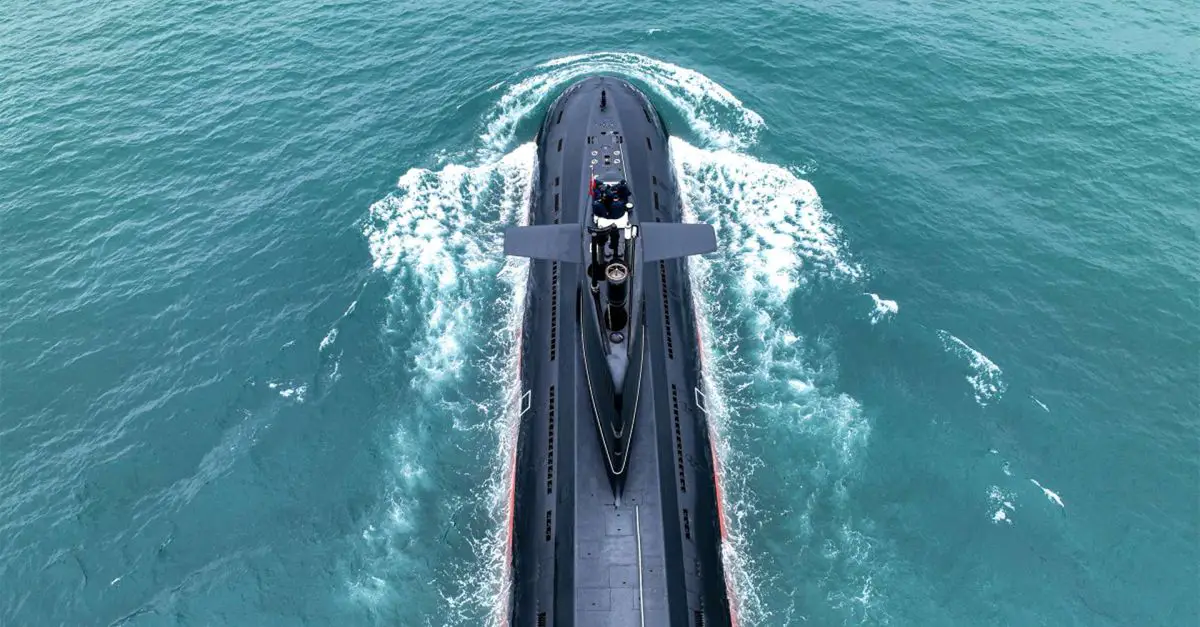
For China, anti-submarine patrol aircraft, equipped with powerful detection and weapon systems, pose a significant threat to submarines, often referred to as "submarine killers." (Picture source: China MoD)
The journal Command Control & Simulation was founded in 1979 and is sponsored by the Jiangsu Automation Research Institute under China State Shipbuilding Corporation Limited. The journal covers topics related to integrated electronic information systems, combat systems, weapon systems, and simulation technologies across sea, land, air, and space domains. Its readership includes experts, scholars, students, and technicians from various Chinese military branches and research institutes.
The article discusses the strategic importance of submarine concealment and the challenges posed by advancements in anti-submarine technologies. Anti-submarine patrol aircraft, equipped with powerful detection and weapon systems, pose a significant threat to submarines, often referred to as "submarine killers." Traditional defense tactics, such as changing speed, direction, and depth, offer limited effectiveness against these advanced aircraft. The article suggests that laser weapons could provide a more effective means of defense by allowing submarines to actively engage and destroy these threats.
Laser weapons are described as directed energy weapons that utilize laser beams to damage or disable targets. They are categorized into low-energy and high-energy lasers based on their output power and destructive capabilities. High-energy lasers, in particular, can cause structural damage or functional failures in targets through ablation effects and shock waves. The article highlights several advantages of laser weapons over traditional weapons, including rapidity, anti-interference, accuracy, anti-saturation attack, and economical operation.
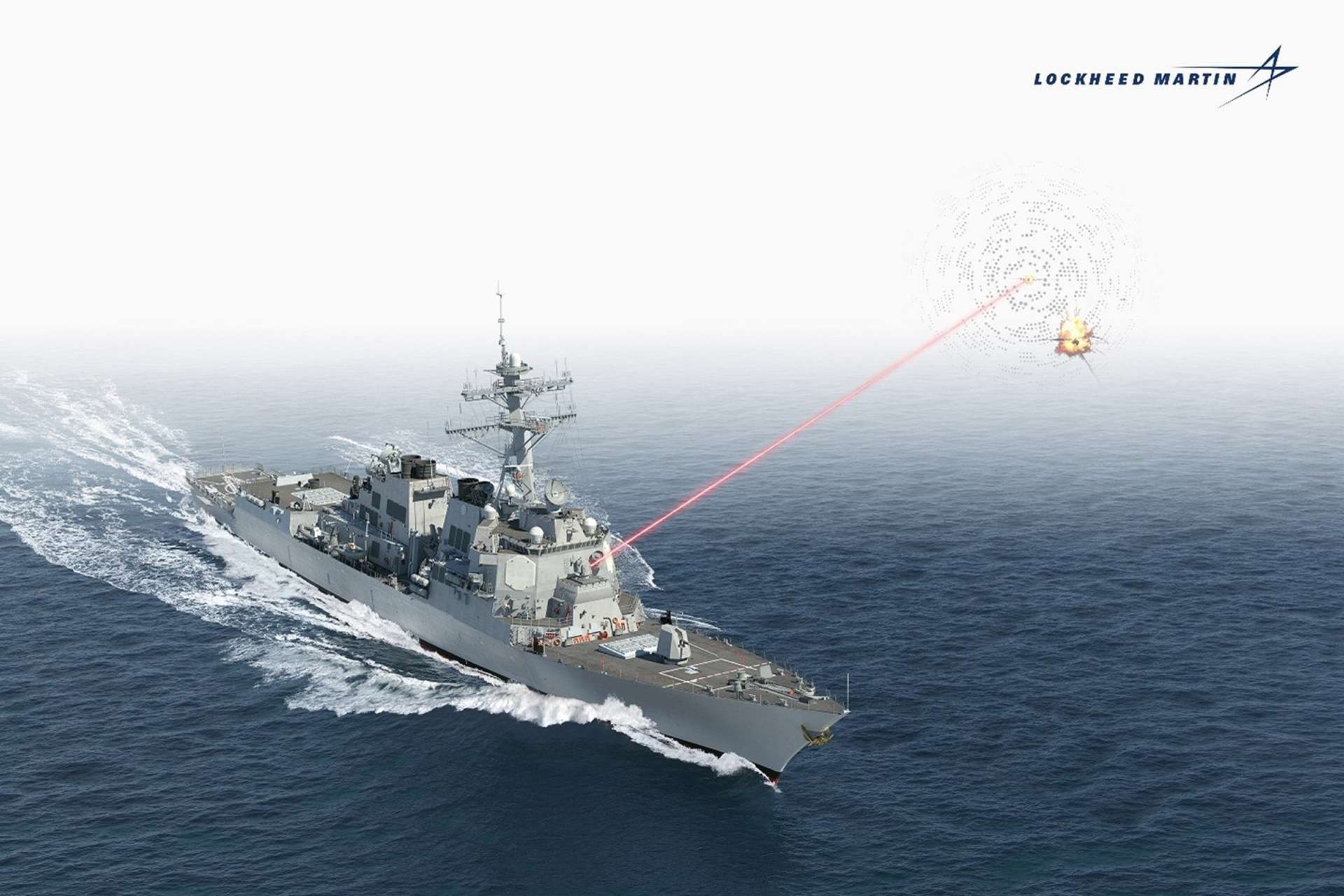
The United States, in particular, has advanced the application of ship-borne laser weapons, with Lockheed Martin developing systems such as the LaWS and Helios. (Picture source: Lockheed Martin)
The article reviews the progress in laser weapon research and development made by countries like the United States, Russia, and Israel. The United States, in particular, has advanced the application of ship-borne laser weapons, with Lockheed Martin developing systems such as the LaWS and Helios. These systems utilize flexible optical fiber and modular designs to address challenges related to size, startup difficulty, and cooling. The U.S. Navy has also explored the potential of integrating laser weapons into Virginia-class attack nuclear submarines, indicating the viability of such technologies for underwater platforms.
The integration of laser weapons on submarines poses specific installation requirements due to the limited internal space and the need for effective cooling systems. Advanced submarines, particularly those in the U.S. Navy, often employ single-hull structures that trade reserve buoyancy for more internal space. This design choice facilitates the accommodation of modular fiber lasers, which are scalable and easier to cool. The article highlights the modular fiber laser developed by Lockheed Martin as a potential solution. This laser system uses flexible optical fibers, which can be coiled to save space and improve cooling efficiency. The high surface area of the fibers enhances heat dissipation, a critical factor for maintaining operational stability in confined submarine environments.
The modular design of these lasers allows for scalability, meaning that the power output can be increased by adding more modules. This flexibility is crucial for submarines, which must balance the need for powerful weapons with spatial constraints. Additionally, integrating laser weapons into the optoelectronic mast, a periscope-like device, allows for simultaneous detection and attack capabilities. This integration is facilitated by the compact nature of fiber lasers, which can be housed within the mast without significantly altering the submarine’s profile or buoyancy.
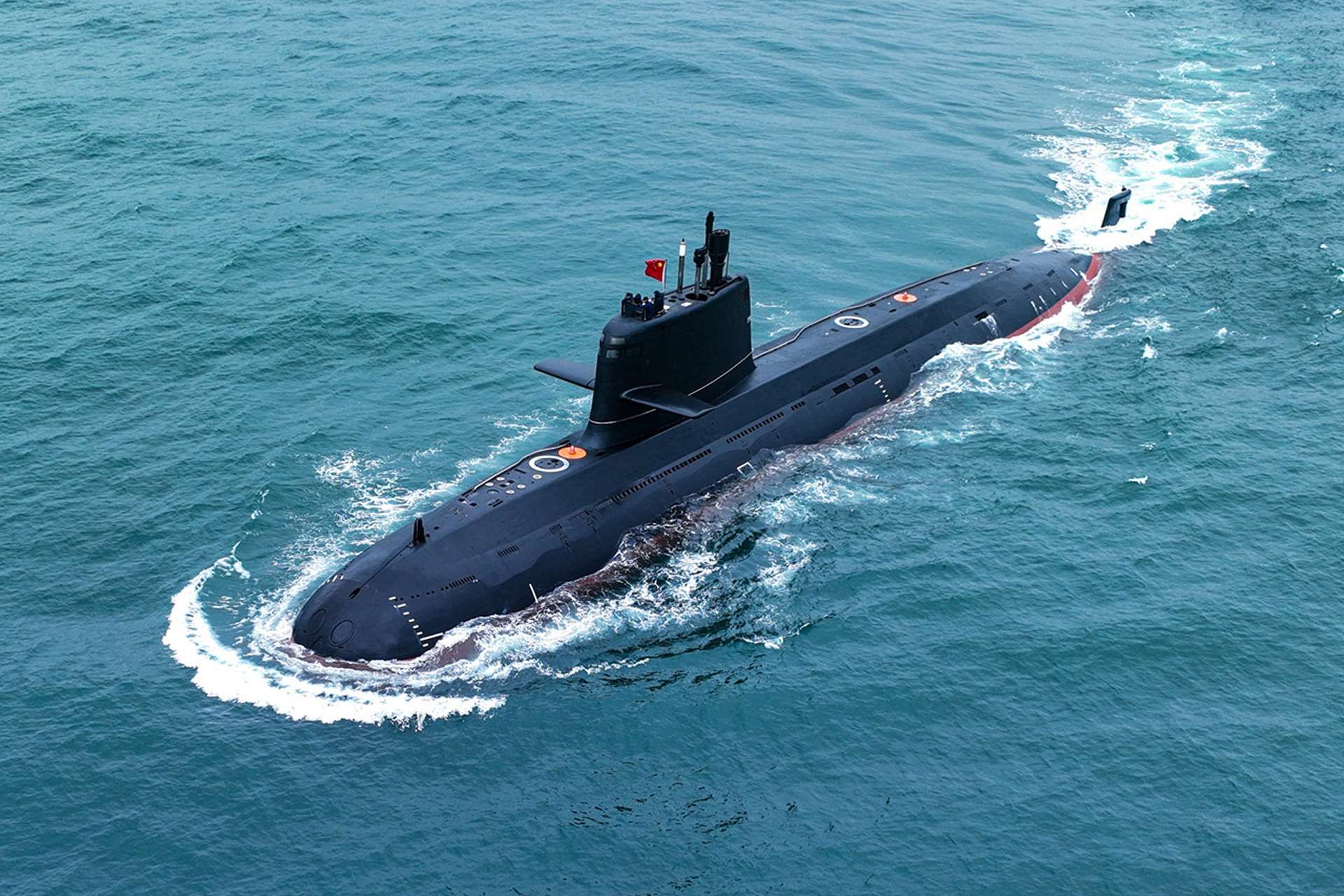
The integration of laser weapons on submarines poses specific installation requirements due to the limited internal space and the need for effective cooling systems. (Picture source: China MoD)
Energy management is another critical consideration. Most modern naval vessels, including submarines, are transitioning towards integrated electric propulsion systems, which can provide the necessary power for high-energy laser weapons. The U.S. Navy's Virginia-class submarines, for example, are equipped with nuclear reactors that generate substantial electrical power, potentially sufficient for powering laser weapons. As energy storage and management technologies improve, the feasibility of installing even more powerful laser systems on submarines will increase.
For the authors of the article, the operational use of submarine-borne laser weapons involves careful timing and tactical considerations, particularly when facing anti-submarine patrol aircraft. Submarines must decide whether to actively or passively engage threats, considering wartime or peacetime conditions, enemy and friendly force situations, and mission objectives. Active engagement involves using the submarine's own reconnaissance and detection equipment or receiving target information from shore-based command posts to locate anti-submarine aircraft before they can detect the submarine. This preemptive approach allows the submarine to remain concealed while preparing to strike.
Passive discovery, on the other hand, occurs when anti-submarine aircraft have already begun their search. In this scenario, submarines must quickly assess whether they have been detected and choose the most appropriate response. The article emphasizes that the decision-making process must consider whether the submarine is operating in wartime or peacetime. In peacetime, the objective may be to evade detection and avoid escalation, while in wartime, the priority is to neutralize the threat to ensure mission success.
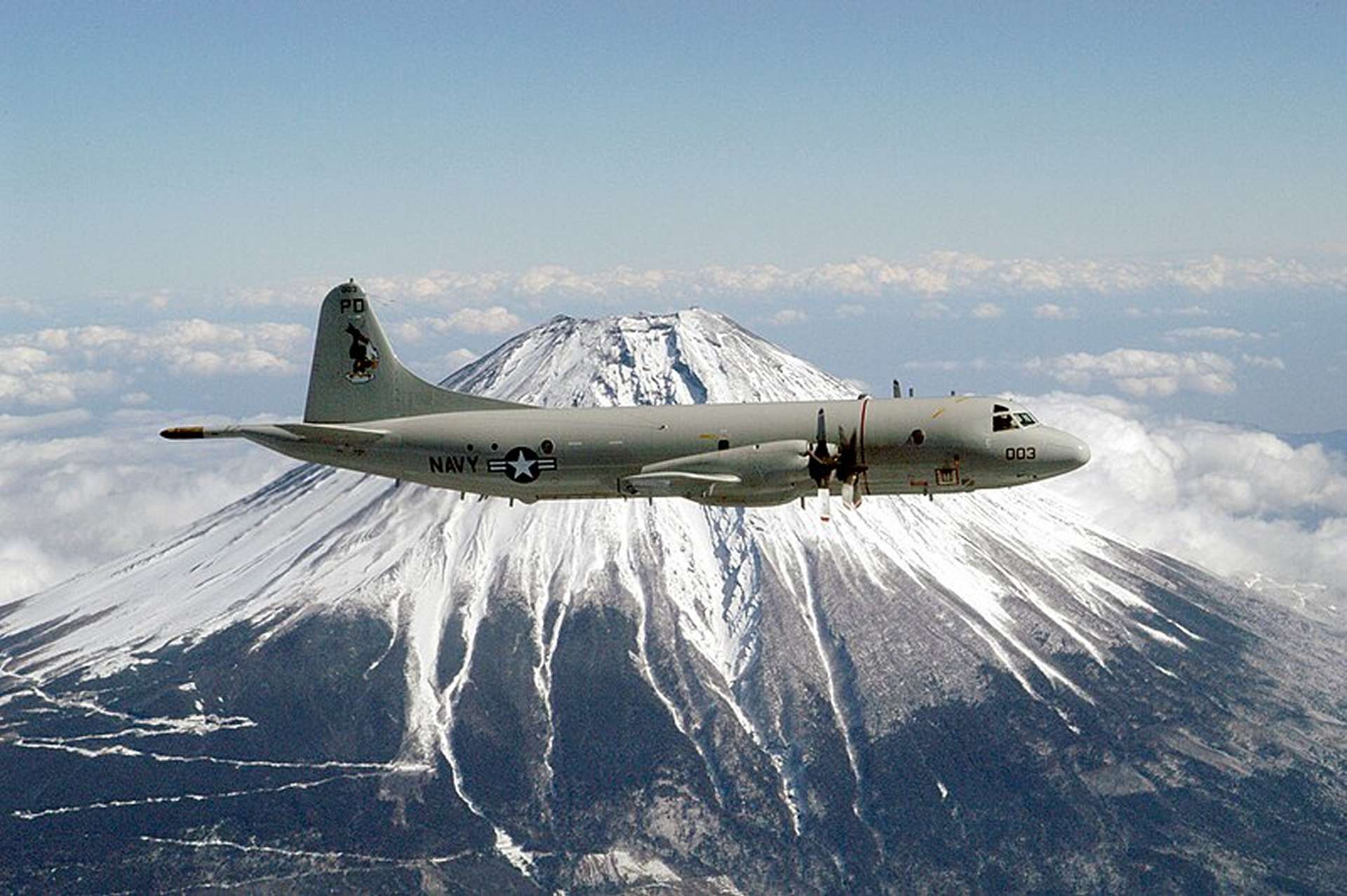
Once an anti-submarine aircraft is detected, the submarine may ascend to periscope depth to deploy the laser weapon. (Picture source: US Navy)
The process of engaging anti-submarine aircraft typically involves several steps. First, the submarine uses passive sonar to detect the noise generated by the aircraft’s engines or the splash of deployed sonar buoys. Once an aircraft is detected, the submarine may ascend to periscope depth to deploy the laser weapon. The optoelectronic mast, equipped with the laser, is then raised above the waterline to engage the target. The article notes that the laser's precision and speed allow it to target critical components of the aircraft, such as sensors and engines, thereby reducing the aircraft's ability to detect and attack the submarine.
The article details various types of targets that submarine-borne laser weapons could engage, each requiring specific tactics and power levels. Drones and unmanned boats, anti-submarine patrol aircraft, anti-submarine helicopters, ballistic missiles, cruise missiles, and satellites are all potential targets. The article provides detailed calculations for each scenario, indicating the necessary power levels and engagement strategies to effectively neutralize these threats, including 100 kW and 150 kW-class laser weapon systems.
The article outlines several principles for the effective and strategic use of submarine-borne laser weapons. Due to the risk of exposure, laser weapons should be used as a last resort in air defense scenarios. Submarines must weigh the tactical benefits of engaging a target against the potential risk of revealing their position. The article emphasizes that the use of laser weapons should be driven by the urgency of the threat and the strategic importance of maintaining concealment.

Located on Taiwan's southwestern coast, Kaohsiung Port is the island nation's principal port and is also one of the largest container handling facilities in the world. (Picture source: Taiwan Port Corporation Kaohsiung Port Branch)
As noted by the authors of this article, Taiwan's reliance on sea transportation for civilian supplies makes it vulnerable to submarine warfare, particularly with the use of submarine-borne laser weapons. Ports, as critical entry points for imported materials, often have facilities for oil storage, which are essential for wartime fuel needs. Submarines, utilizing their ability to remain concealed, could approach enemy ports to identify these oil storage facilities through early-stage intelligence or their own reconnaissance equipment. Submarine-borne laser weapons could then be employed to target and damage these facilities, potentially causing fires and hindering the opponent's ability to replenish oil supplies from the sea. This strategy could impact the duration of the conflict by limiting the enemy's fuel resources.
Furthermore, laser weapons could target other vital port infrastructure, disrupting operations and preventing support from arriving via sea transport. This approach could also engage part of the opponent's anti-submarine forces, easing the pressure on submarines in open waters. According to this article, by affecting the port's functionality, these strategies could create economic and logistical challenges for the opponent, which could diminish public support for the conflict and potentially lead to domestic unrest.
In non-wartime scenarios, the primary goal may be to deter and warn off anti-submarine patrol aircraft by disabling their sensors without escalating to lethal force. In wartime, however, the emphasis shifts to neutralizing threats decisively to ensure the submarine's survival and mission success. The article highlights that laser weapons can be used to blind or disable enemy detection systems, allowing submarines to maintain their stealth while neutralizing the threat.
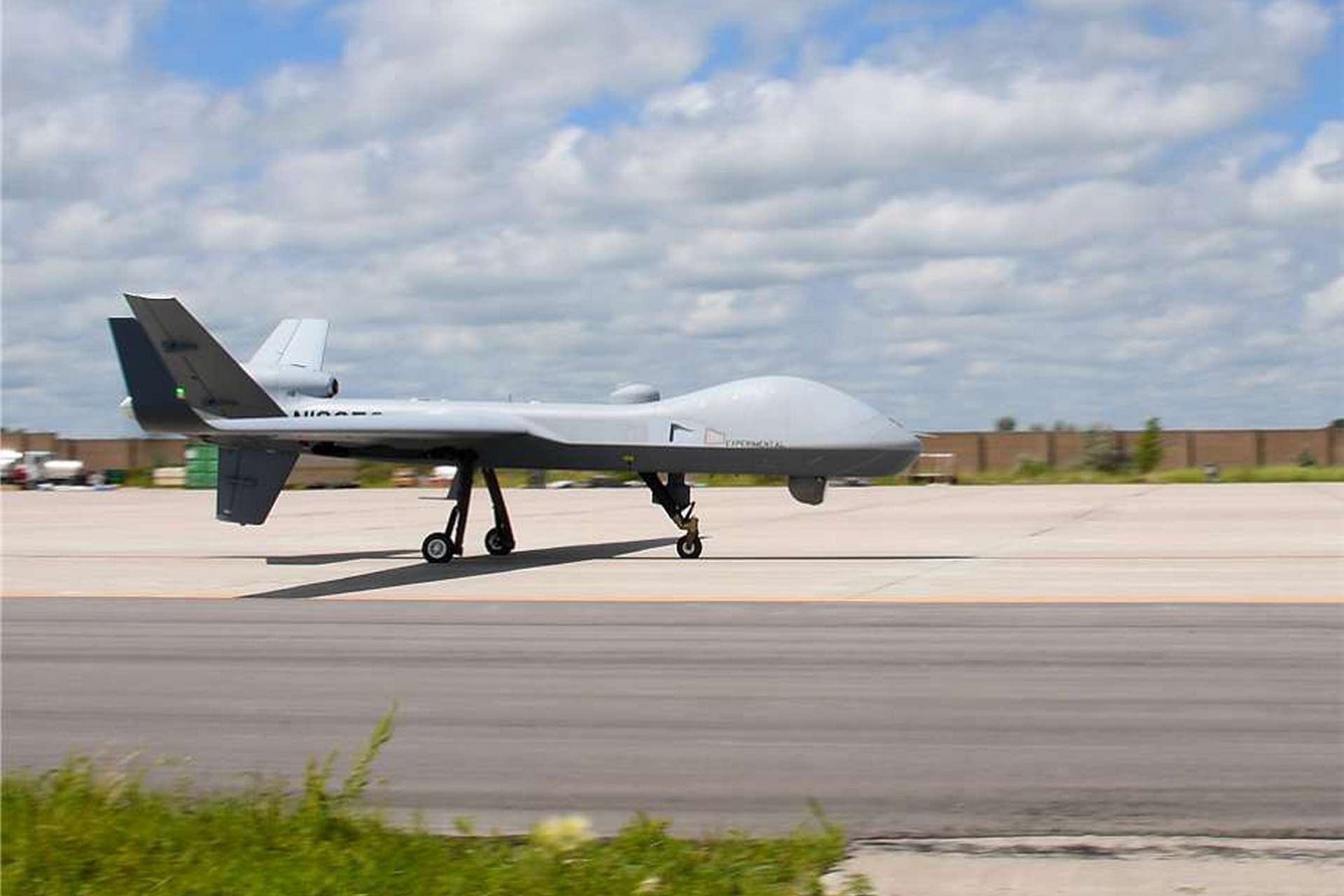
A 100 kW laser weapon can achieve significant damage capabilities on a military drone, including fuselage penetration, and the disabling of optoelectronic/infrared detection equipment at various distances. (Picture source: US DoD)
The article provides detailed calculations and scenarios for the damage capability of submarine-borne laser weapons, considering factors such as laser wavelength, beam quality, irradiation time, and target distance. For example, a 100 kW laser weapon can achieve significant damage capabilities, including fuselage penetration, radar damage, and the disabling of optoelectronic/infrared detection equipment at various distances. These calculations underscore the significant destructive potential of high-energy lasers and their effectiveness in engaging various aerial and missile threats.
The integration of laser weapons on submarines could transform future naval combat by enabling diverse missions such as escort missions for merchant ships, protection of strategic missile nuclear submarines, coastal target attacks, anti-missile operations, anti-satellite missions, and real-time tactical support. These capabilities would enhance the operational flexibility and strategic impact of submarines in both peacetime and wartime scenarios.
The article concludes by discussing the key technologies required for the future development of submarine-borne laser weapons. These include advancements in fire control systems, energy management, and material durability to overcome current limitations and maximize the combat effectiveness of laser weapons. Future fire control systems must be capable of real-time target acquisition, tracking, and engagement, while efficient energy storage and management systems are crucial for the operation of high-energy laser weapons. Additionally, the development of more durable materials for laser components will enhance their reliability and operational lifespan, ensuring consistent performance in demanding operational environments.


























